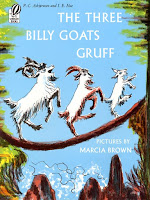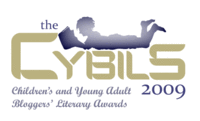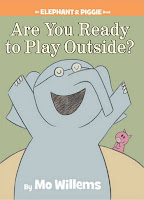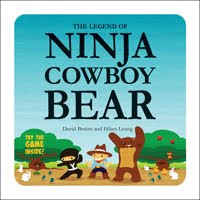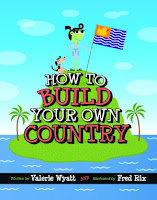 Circus Ship by Chris van Dusen
Circus Ship by Chris van DusenToday, (ok, this evening. whatever) I'm looking at two books I really didn't expect to like or be interested in at all. But I was surprised and delighted by their awesomeness. First, Circus Ship by Chris Van Dusen. Now, I know you are saying, "what? how can you not be a fan of the brilliance which is Dusen?" but my only exposure to this exuberant artist was through the one Mercy Watson book, which I read and reviewed for Cybils. You can probably sense a little "these pictures are cool, but what are they doing in a chapter book?" vibe going on there. Anyways. So, several people raved about Circus Ship, and it was on the front of the publisher's catalog and all, but somehow the cover just didn't really grab me. Plus, I had found out it rhymed. I am always suspicious of picture books that rhyme. So I waited until another library in our consortium had bought it and I borrowed it....and was wowed. The text has the perfect cadence and rhythm for reading aloud. Not too long, not too short. The rhymes are natural and unforced and skillfully weave dialogue and narrative together. The illustrations....ooooh. Van Dusen's glorious colors are all here, gleaming, sparkling, exploding off the page, even when dimmed by storms and menaced by evil villains. The slightly retro feel of the art skilfully gives the illustrations a realistic historical feel while the exuberant animals and bemused villagers place this fictionalized account of a real event firmly in fantasy land.
Verdict: Highly recommended, added to my order list, and onto the storytime roster!
ISBN: 978-0763630904; Published September 2009 by Candlewick; Borrowed from the library; Purchased for the library
Crow Call by Lois Lowry, illustrated by Bagram Ibatoulline
 The second story is a complete change of pace. I glanced at a few reviews for this and thought scornfully "we don't need any more memoir picture books, let the adults buy them for themselves. I buy books for kids". Plus, although I loved and read often Lowry's Number the Stars, I was deeply scarred by the forcible reading and truly puerile discussion of Lowry's Giver in an unbelievably boring and infantile "children's literature class" in college. Let me simply say that the professor had previously taught third grade and leave it at that. At least it gave me an idea of what high school students suffer in literature classes *shudder*. Anyways.
The second story is a complete change of pace. I glanced at a few reviews for this and thought scornfully "we don't need any more memoir picture books, let the adults buy them for themselves. I buy books for kids". Plus, although I loved and read often Lowry's Number the Stars, I was deeply scarred by the forcible reading and truly puerile discussion of Lowry's Giver in an unbelievably boring and infantile "children's literature class" in college. Let me simply say that the professor had previously taught third grade and leave it at that. At least it gave me an idea of what high school students suffer in literature classes *shudder*. Anyways.But the more positive reviews I saw, the more I thought "well, I should at least look at it." So I looked at it and was entranced. This picture book is definitely for older readers and listeners. The lengthy text and nuanced narrative will be difficult for preschoolers or even kindergarteners to follow. But older children who have the patience for a longer story and an appreciation of language will be a rapt audience for this book. The story is evocative and emotional, although the language is plain and almost stark. A small girl tries to reconcile her memories of her father with the stranger who has returned from war. Together, she and her father rebuild their relationship and reconnect. Simple and yet deeply moving, capturing the pain of separation, the fragility of family relationships, and the wonder of the natural world. The pervasive browns, greys, and strong earth tones of the illustrations recreate the somber landscape of early winter but manage to thread the hope of returning life and joy throughout the story.
Verdict: Beautiful and moving, highly recommended
ISBN: 978-0545030359; Published October 2009 by Scholastic; Borrowed from the library



